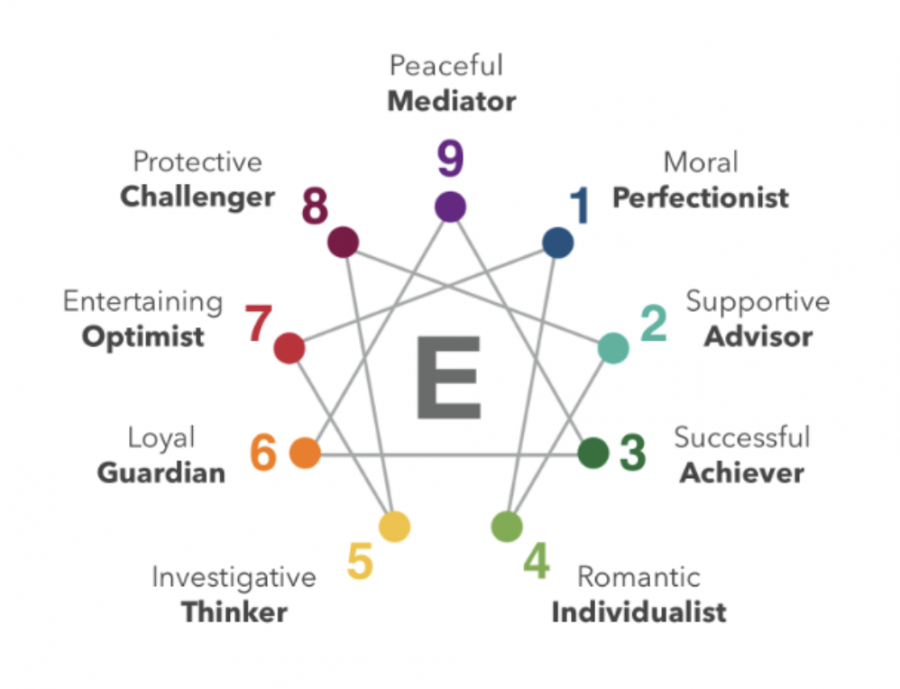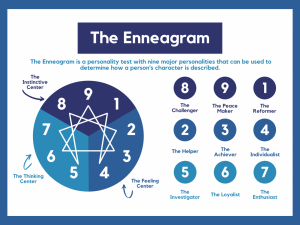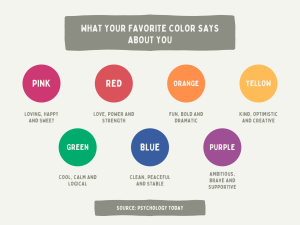The Enneagram Personality Test: Exploring Your Mind
The Enneagram’s graph, including the various personality types and wings.
May 4, 2021
The Enneagram is a personality typing system that measures the way a person perceives and observes themselves, as well as the world. Unlike the Myers-Briggs personality test, which measures decision making, the Enneagram measures 3 basic things: desires, fears, and motivations. However, the Enneagram is a lot more than just another personality test.
According to Integrative9 Enneagram Solutions, the origins of the Enneagram name can be traced back to ancient Greece, whereas the science of it has similarities to that of Greek philosophy, Sufism (versions of Islam that focus more on mystical ideas) and “esoteric Christianity,” which is the teaching of Christianity as a “mystery religion,” or as a special version for initiates. although the exact history remains unknown. The Enneagram Institute also provides more information.
The Types
- Type One: The Perfectionist
Self-controlled, perfectionistic, and principled. Their basic desire is to be a good person in general, and their fear is to be seen as evil or corrupt. They want to justify themselves and be morally “good.”
- Type Two: The Advisor
Generous, sensitive, people pleasers with a tendency to be possessive. Their basic desire is to feel loved and wanted, and their basic fear is to be “unworthy” of love. They want to be appreciated and needed, and often self-neglect for others’ well being.
- Type Three: The Achiever
Adaptable, driven, and charismatic critics, the Achiever’s desire is to feel valuable and significant, and their fear is being useless or a failure. They crave attention and praise through over-achieving.
- Type Four: The Individualist
The Individualist is self-absorbed, dramatic, expressive, and self-aware. They hope to find their personal significance, and their fear is having no identity. They are obsessive over how others perceive them, as well as how they perceive themselves.
- Type Five: The Thinker
The isolated, innovative, and observant thinker wants to be capable and understand everything around them, and fears being clueless or helpless. They often devote themselves to the study of how the universe works, how people work, and want to feel put together.
- Type Six: The Guardian
Sixes are suspicious, anxious, and responsible. They want to feel secure and safe, and fear being without guidance. They are often insecure and emotionally aware, and tend to have a hard time trusting others.
- Type Seven: The Optimist
They often describe sevens as spontaneous “scatter-brained” adventurers. They value feeling excited and happy and often seek things in life that make them feel that way. They fear being sad and often go to extreme measures to distract themselves from negative emotions.
- Type Eight: The Challenger
These confrontational, self-assured, and competitive debaters have a desire to protect themselves from any kind of vulnerability and to prove that they are independent. Their fear is to depend on others or be seen as weak. They cope with this by maintaining dominance in social situations.
- Type Nine: The Peacemaker/Mediator
Trustworthy, stable, and accepting, the Peacemaker’s desire is to maintain harmony and avoid conflict; their fear is loss or separation. They cope with this by ignoring things that need to be said in order to avoid confrontation.
The Wings
Enneagram is not only known for its cognitive uniqueness but also for its more vast options of types; but the Enneagram is aware fitting someone into a box is impossible. That’s why Enneagram “doesn’t put you in a box, it shows you the box you put yourself in and how to get out,” as Josh Keefe states. Along with this idea, there are actually 27 types- for whichever one you score as, you have a “wing” or a secondary personality that adds other details to your dominating type (although, some people have two wings or none at all). However, the wing can only be the number before or after your first type. For example, someone with a type 3 wing 4 (3w4) has a dominant personality of 3 but shares attributes with the type 4. Enneagram also believes that every person possesses traits from every type, but there is one that dominates the rest. This also shows how different the Enneagram is from other personality typing systems.
The Graph and the Levels
The Enneagram graph appears pretty confusing, but it’s actually fairly simple to understand after learning about the Levels of Development: healthy, average, and unhealthy, which breaks down into 9 total levels. This shows how each type adapts to pressured situations. Level one starts off with “The Level of Liberation,” which is the healthiest level; for example, a type one becomes humane, hopeful, and realistic; simply accepting what is. On the contrary, a type one at the lowest level, “The Level of Pathological Destructiveness,” becomes overly critical of others, and may even experience nervous breakdowns; they share psychological traits with that of OCD. The graph also adds to this idea. The lines point to the types that the starting type acts as when under stress versus when experiencing growth. For example, type 8 has lines connecting to type 2 and type 5. This means that a stressed type 8 behaves like an unhealthy type 5, and when growing, they will act as a healthy type 2. This is one aspect of Enneagram that doesn’t focus on the scientific aspect of things, but the emotional. According to Psychiatry Online, Enneagram has mostly been used by mental health professionals in terms of therapy, which is yet another reason Enneagram is so unique.
In a world of people constantly trying to shove themselves and each other into boxes, it’s easy to lose sight of your true identity. That’s what makes the Enneagram so amazing; it studies the deepest parts of you, all while avoiding the idea of labeling you as one thing, and acknowledging the individuality and uniqueness of every human.
The most accurate free Enneagram tests:











